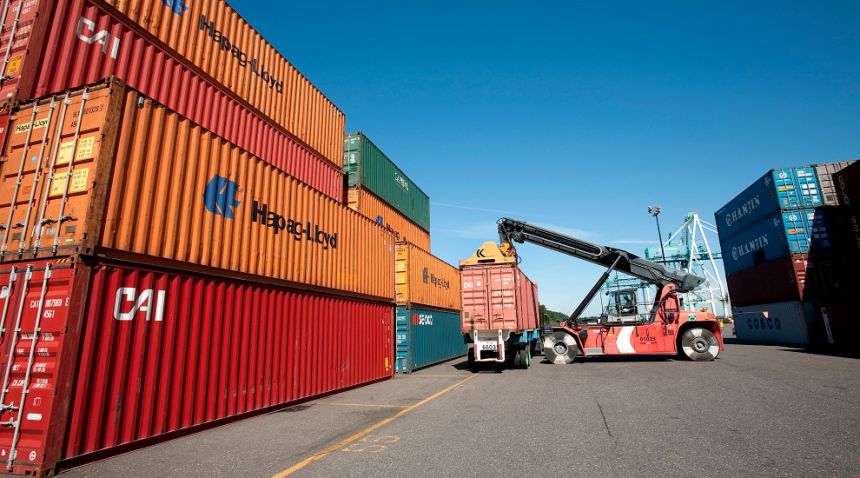Prime Minister Narendra Modi has made it clear that India would not export raw materials to any nation before adding appropriate value addition to it in order to command greater prices on the global market for Indian materials. He is well aware that we criticised the British for syphoning off raw material from the country and dumping finished goods. But that is exactly what we have been doing even after independence.
During the colonial era, “exporting raw materials without value addition” refers to the practice of colonies like India mainly exporting their raw natural resources—like raw cotton, jute, tea, and indigo—to the colonising power (like Britain) rather than domestically processing them into finished goods. This meant that the colony was not fully benefiting economically from their resources and was essentially serving as a supplier of basic materials to the industrialised nations where value was added through manufacturing.
India’s principal exports during the British era were raw materials such as jute, which was used to make sacks and other industrial materials, opium, indigo, tea and raw cotton for textile production.In order to guarantee a consistent supply of inexpensive raw materials for their own manufacturers, colonial powers often deliberately inhibited the development of local processing industries in their colonies. This arrangement thus severely hindered the economic growth of colonies by preventing them from establishing their own manufacturing industries and forcing them to depend on the more expensive finished products imported from the colonising power.
The British government’s primary goal was to keep India as a source of raw materials so that they could control the prices and supply of goods to maintain their economic dominance over India and prevent the growth of Indian industries that could compete with theirs. As a result, the paper, metallurgy, glass, and textile sectors rapidly went out of business. By 1813, the Indian handicrafts market had dried up both domestically and abroad.
Indian goods were unable to compete with British factory-made goods that were manufactured using machines. Britain was able to monopolise and take control of some markets through colonialism and war. They extorted money from zamindars, merchants, Indian kings, and even the general populace. Both the official wages and the earnings from commerce were added to this outflow. Their economic policies were clearly designed to support the interests of the East India Company and later the British Empire.
In a collection of essays published recently by Columbia University Press, renowned economist Utsa Patnaik attempts to make a comprehensive estimate that the British Raj syphoned out at least £9.2 trillion (or $44.6 trillion; since the exchange rate was $4.8 per pound sterling during much of the colonial period, 1765 to 1938).
Patnaik’s study demonstrates that India wasn’t developed by Britain. On the contrary, India developed Britain. Even though the British opened India to the modern world, modern education, modern science, democracy, modern administration, modern judiciary, etc., which laid the foundation of modern India, British colonialism tried to impoverish India economically by destroying its rural industries and converting India to a supplier of raw materials to enrich the British.
Mahatma Gandhi believed most British imports could be produced in India by common people. In order to reduce their reliance on costly imports from Britain, he encouraged Indians to make their own clothing, salt, and other goods, even though the raw materials originated in India. This would help to lift India out of poverty by creating jobs and an industry in the country.
The Swadeshi movement was a political movement in India started in India on August 7, 1905 primarily aimed at boycotting British goods and promoting the use of locally produced goods as a means to achieve self-rule. In 1918, khadi cloth played a significant role in Mahatma Gandhi’s Swadeshi Movement, which aimed to discourage the use of foreign goods and supplies.
Exporting raw materials without value addition has several disadvantages:-
- Low profitability: Because processing and manufacturing add value, selling raw materials usually results in lesser revenues than exporting completed goods.
- Price Volatility: The price of raw materials can vary greatly on the worldwide market, which makes it challenging for exporters to plan ahead and handle their finances.
- Limited economic diversification: An excessive dependence on raw material exports might hinder a country’s economic development by decreasing opportunities to create diverse industries and higher-skilled jobs.
- Low job creation:Value addition on raw materials generally leads to increased employment generation as it creates a need for additional labor across various stages of processing, packaging, and marketing the finished product, thereby opening up more job opportunities compared to simply selling raw materials.
- Vulnerability to market changes:The economy of the exporting nation may suffer greatly if a large buyer in the international market lowers demand for the raw resource.
- Lack of Technological Advancement: Without making investments in processing and manufacturing capabilities, a country may miss out on opportunities to develop advanced technologies and expertise in related industries.
Exporting value-added products instead of raw materials to a competing market will never be a bane but actually a boon. Since they generate higher revenue per unit, leading to a larger contribution to GDP. By diversifying into value-added sectors, a country can become less reliant on volatile commodity prices and build a more resilient economy.
For a country like India, which runs on human capital, employment will be necessary, which can be met by adding value to the raw material. Make in India, and exporting firms are actually job providers for the mass amount of job seekers in the country.
To support the Make in India program, several schemes like Skill India, Startup India, Digital India, Pradhan Mantri Jan Dhan Yojana (PMJDY), Smart Cities, AMRUT, Swachh Bharat Abhiyan, Sagarmala, International Solar Alliance (ISA), and AGNII were launched, aimed to raise the manufacturing sector growth and increase the manufacturing sector’s share in the GDP. When a country transforms raw materials into more finished products, it is essentially “adding value” by increasing the product’s utility and market price.
PM Modi’s decision to restrict the export of raw materials and import of finished products in order to increase GDP and solve the issue of unemployment seems to be a wise choice. As we have a large labour force, our products will be cheaper too, which in turn allows us to grab grounds abroad.
To implement his decision effectively, Hence, to implement his decision effectively, Modi should provide the required wherewithal, prowess, and expertise in both letter and spirit to Make in India programs.However, the challenge remains in efficient implementation, but effective execution holds the key.
(Author is BE (Mech), BOE, ASME, Deputy Director of Boilers (Retd) Mysuru)








